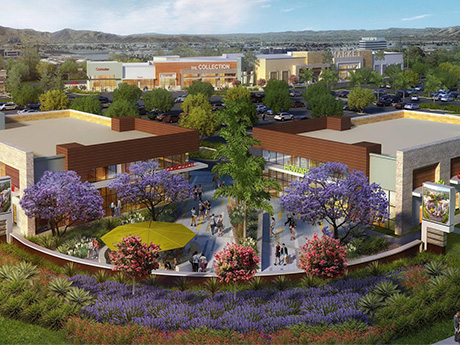— Brad Umansky, President, Progressive Real Estate Partners —
The retail vacancy rate for the Inland Empire has dipped below 6 percent for the first time since 2008. But there is a dramatic difference between then and now. From 2006 to 2008, there was about 20 million square feet constructed, compared to only 2.8 million square feet from 2020 to 2022.
Using Costar’s data, retail rents rose 5.7 percent in the past year, which was just under the 6 percent rent growth in 2021. These are the two highest years of rent growth in the past 15 years. In my opinion, the market has regained equilibrium, which is about where we were at in 2019 before the bottom fell out the following year. The substantial development of the early 2000s required almost a decade to fully absorb. COVID then created 1.5 million square feet of negative absorption in 2020, which has all been fully absorbed, plus another 3.3 million square feet of net absorption in 2021 and 2022.
The Inland Empire added more than 74,000 jobs in the past year, and the region’s population continues to grow despite the decline in California’s overall population. People are attracted to the employment opportunities, lower cost of living, open space, population diversity and less traffic.
Only 1.7 million square feet of retail space was developed in the past two years, most of which was pre-leased and in projects generally under 20,000 square feet. Discount stores, coffee purveyors, restaurants, automotive uses, car washes, fuel stations, and a few grocery stores and fitness providers have led this development. Rising construction costs, exit cap rate uncertainty, and entitlement and construction timing unpredictability have all reduced the development pipeline.
Lewis Retail Centers is the most active developer, and recently opened the Marketplace at Calimesa, which is anchored by Stater Bros. The firm has two additional Stater Bros.-anchored projects under construction, including the Collection in Ontario and Town Center at the Preserve in Chino. Wood Investment Companies is building the Ranch at Model Colony in south Ontario. The project is slated to include Hobby Lobby, Ross, Burlington, Five Below and Planet Fitness. Newmark Merrill is constructing the Rialto Village in Rialto, which will include Sprouts, Burlington, Ulta, Five Below and In-N-Out Burger.
The desire of high-net-worth, Southern California-based investors to purchase Inland Empire properties has continued to push cap rates near record lows for single-tenant and high-quality multi-tenant retail properties. Rising interest rates have softened the investment sales market with fourth-quarter 2022 sales volume off more than 50 percent from the record-setting fourth quarter of 2021. In 2022, we saw steadily declining sales volume with $605 million in the first quarter of 2022 compared to $394 million in the fourth quarter. This further indicates a return to normalcy as the average quarterly sales volume over the past decade has been $375 million.



